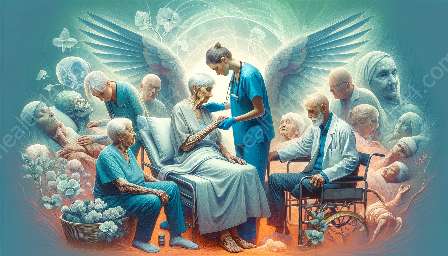Technology has the potential to revolutionize the care and support provided to older adults with geriatric syndromes. Geriatric syndromes refer to a group of medical conditions that commonly affect older adults and are not necessarily categorized as discrete diseases. These syndromes can include but are not limited to cognitive impairment, frailty, falls, incontinence, and complex medication regimens. The use of technology can significantly enhance the management, monitoring, and overall well-being of older adults with geriatric syndromes.
Supporting Cognitive Health
One of the key areas where technology can be utilized to support older adults with geriatric syndromes is in promoting cognitive health. Cognitive impairment, such as dementia and Alzheimer's disease, is a prevalent syndrome among older adults, and technology offers various tools and resources to aid in cognitive stimulation and memory support.
For example, cognitive training apps and games can help older adults exercise their brain, improve memory, and maintain mental acuity. These interactive tools are designed to provide engaging activities that stimulate different cognitive functions, promoting cognitive health and potentially delaying cognitive decline.
Additionally, technologies such as virtual reality (VR) and augmented reality (AR) can offer immersive experiences that can benefit older adults with cognitive impairment. VR simulations can create virtual environments that promote reminiscence therapy, relaxation, and overall mental well-being.
Enhanced Safety and Mobility
Another significant aspect of utilizing technology to support older adults with geriatric syndromes is in enhancing safety and mobility. Falls are a common concern among older adults, and technologies such as smart home monitoring systems and wearable devices can help prevent and respond to falls and other mobility-related incidents.
Smart home monitoring systems utilize sensors and cameras to detect unusual activity or potential hazards in the elderly person's living environment. These systems can send alerts to caregivers or emergency services in the event of a fall or other medical emergency, providing peace of mind and timely assistance.
Furthermore, wearable devices, such as smartwatches and fitness trackers, offer features like fall detection, GPS tracking, and emergency call buttons, empowering older adults to maintain their independence while ensuring that help is readily available when needed.
Medication Management and Adherence
Technology can also play a crucial role in medication management and adherence for older adults with geriatric syndromes, particularly those with complex medication regimens. Automated pill dispensers, medication reminder apps, and telehealth services can help seniors manage their medications effectively and adhere to prescribed treatment plans.
An automated pill dispenser can organize and dispense medications according to a specific schedule, reducing the risk of missed doses and medication errors. Medication reminder apps can send notifications and alerts to older adults, reminding them to take their medications on time and in the correct dosage.
Moreover, telehealth services enable healthcare professionals to remotely monitor and support older adults in managing their medications, offering virtual consultations, medication reviews, and personalized medication management plans.
Social Engagement and Connectedness
Loneliness and social isolation can significantly impact the well-being of older adults with geriatric syndromes, leading to adverse health outcomes. Technology provides avenues for social engagement and connectedness, mitigating the negative effects of isolation and promoting mental and emotional well-being.
Video conferencing platforms, social media, and online communities enable older adults to stay connected with family members, friends, and support networks, fostering meaningful social interactions and reducing feelings of loneliness. Virtual social engagement programs and digital support groups offer opportunities for older adults to connect with peers who may share similar experiences and health challenges.
Additionally, intergenerational technology initiatives, such as digital mentoring programs and technology workshops, can facilitate interaction between older adults and younger generations, promoting learning, mutual support, and a sense of purpose.
Remote Monitoring and Telehealth
Remote monitoring and telehealth technologies have become indispensable in supporting older adults with geriatric syndromes, especially in the context of chronic disease management and regular health monitoring. These technologies allow healthcare providers to remotely assess and monitor the health status of older adults, enabling timely interventions and personalized care.
For example, remote monitoring devices can track vital signs, such as blood pressure, heart rate, and glucose levels, providing valuable data for healthcare professionals to monitor the health status of older adults with geriatric syndromes. Telehealth platforms enable virtual consultations, follow-up appointments, and access to healthcare services from the comfort of the older adult's home, eliminating the barriers associated with transportation and mobility challenges.
Conclusion
Technology has the potential to empower and enhance the quality of life for older adults with geriatric syndromes. By leveraging innovative tools and solutions, older adults can benefit from improved cognitive health, enhanced safety, effective medication management, social connectedness, and access to remote monitoring and healthcare services. Embracing technology in geriatric care can lead to a paradigm shift in how we support and promote the well-being of older adults, ensuring that they can age with dignity, independence, and comprehensive support.


